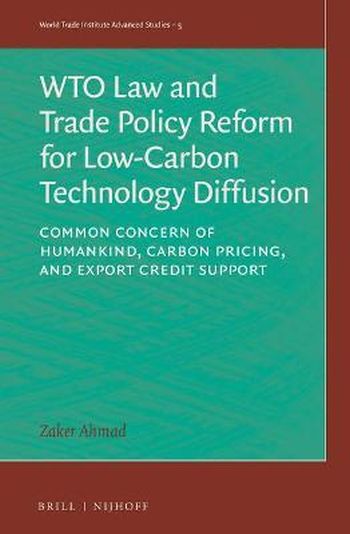
In WTO Law and Trade Policy Reform for Low-Carbon Technology Diffusion, Zaker Ahmad puts a spotlight on the crucial importance of dismantling market barriers and offering incentives to improve clean technology access and diffusion across borders. To that end, the author argues for a synergistic co-development of the international trade and climate legal regimes. Two case studies - one on carbon pricing, another on official export credit support - place the theoretical arguments in a practical trade policy setting. The emerging doctrine and principle of Common Concern of Humankind serves as the key theoretical and structural foundation of the work. A useful read for anyone interested in an effective role of trade law and policy to facilitate climate action.